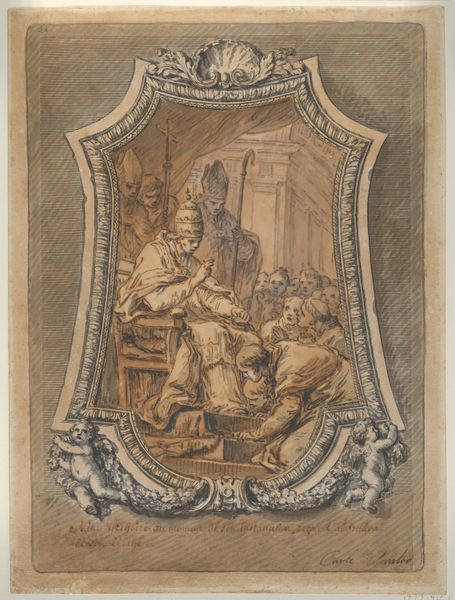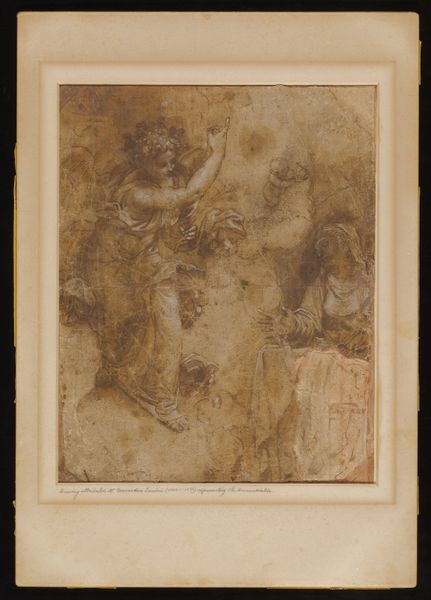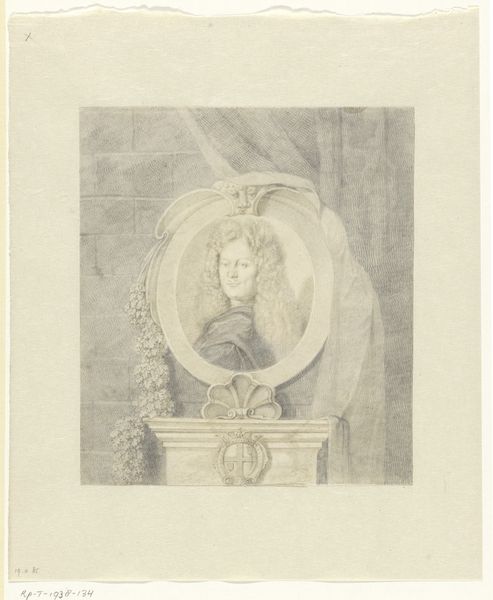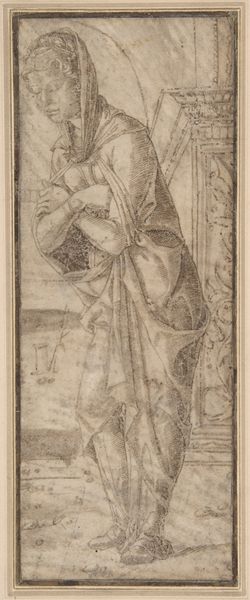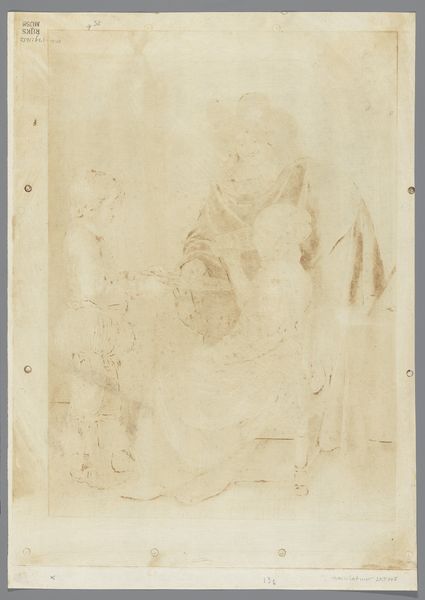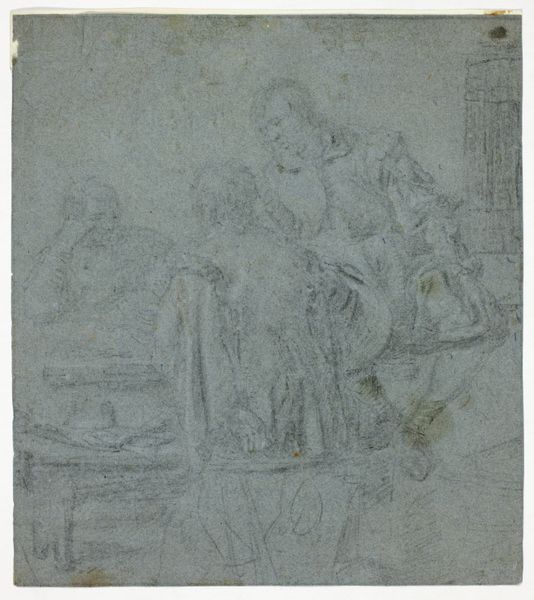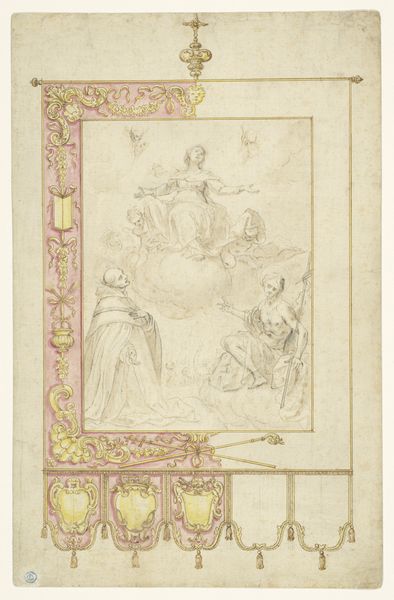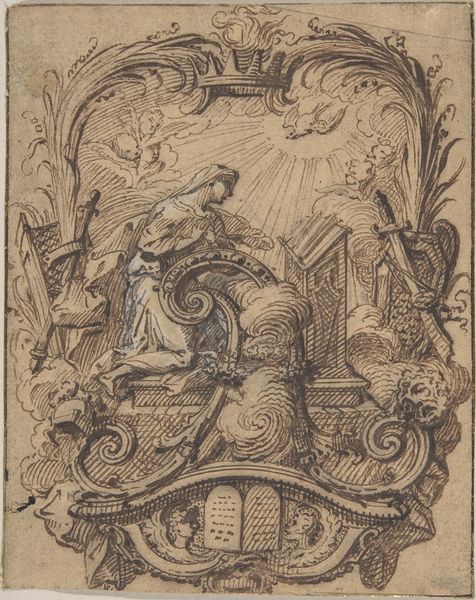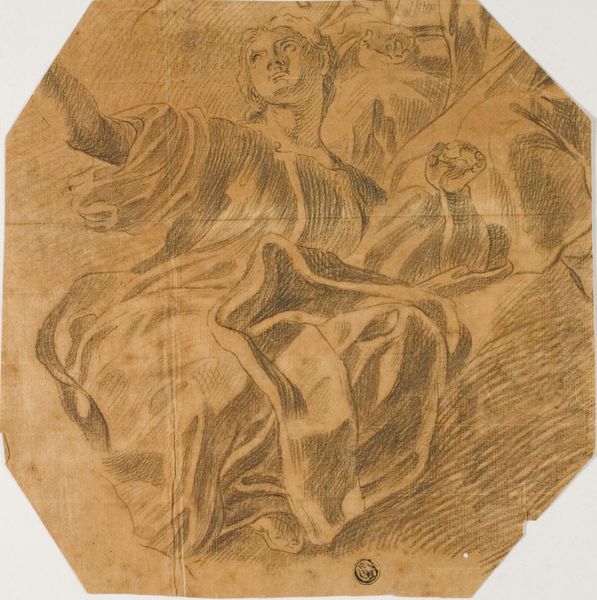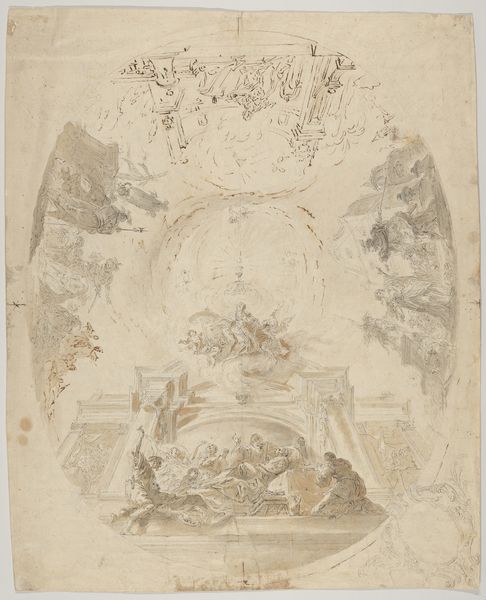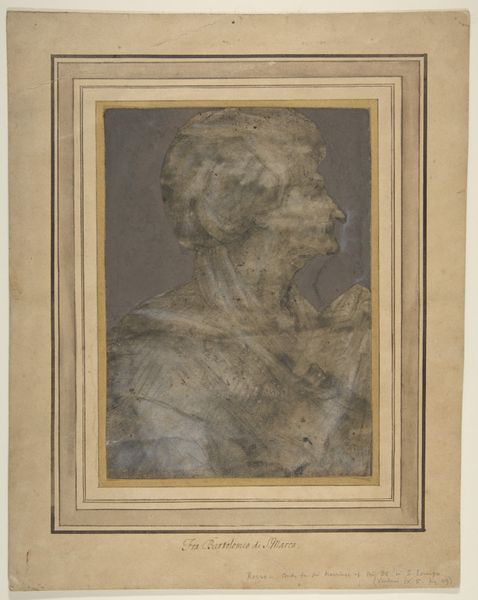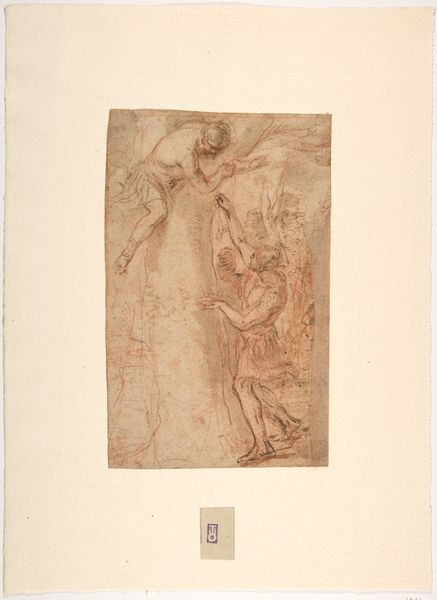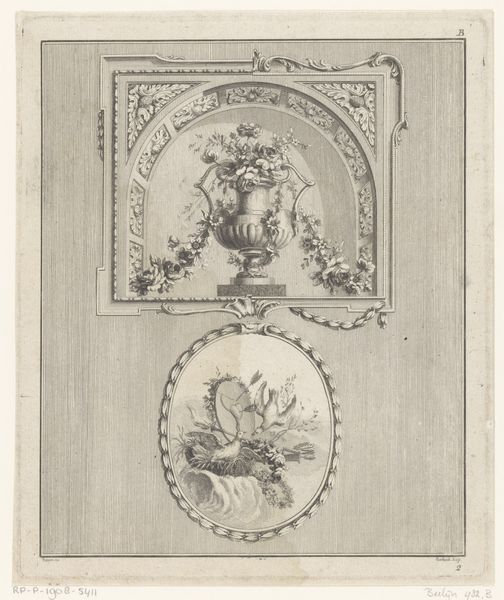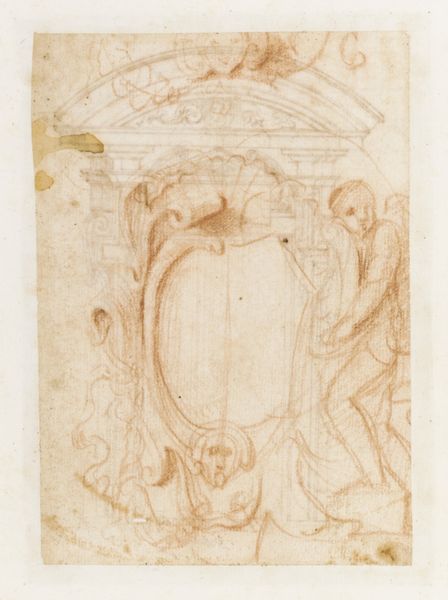
drawing, paper, pencil
#
drawing
#
toned paper
#
allegory
#
paper
#
form
#
pencil
#
line
#
genre-painting
#
history-painting
#
miniature
#
rococo
Dimensions: overall: 13.9 x 8.3 cm (5 1/2 x 3 1/4 in.) support: 15.1 x 10.6 cm (5 15/16 x 4 3/16 in.)
Copyright: National Gallery of Art: CC0 1.0
Editor: So, this is Gabriel de Saint-Aubin's "Allegorical Frame with a Bat," a pencil drawing on toned paper from around 1769. It feels very...contained. Almost claustrophobic with that elaborate frame. What's your take? What do you see in this piece? Curator: Well, let’s think about what constitutes "art" in Saint-Aubin’s time. The production here relies heavily on the labor of creating the toned paper itself – how was that achieved? What minerals or plant-based materials gave it this color? And consider that highly decorative frame. It features a bat motif—are those real bats or fanciful ornamentations? What kind of artisanal craft would have gone into making a frame like that? Editor: That’s true. The materials themselves become significant. So it’s not just about the allegorical scene, but also the social and economic context of creating these objects? Curator: Precisely. The labor is inherent in the finished work, right down to the details within that frame – the implied craftsmanship is vital to how we interpret the drawing and how people would've interpreted it at the time. Consider the price of these materials in the 18th century; what level of consumption are we observing? Who had access to artmaking at that time? Editor: That puts the Rococo style in a new light. Not just frivolous ornamentation, but also a product of its time and labor. And is it common to have the inclusion of the Bat symbol, instead of something more noble? Curator: The bat does seem counter to many traditional symbols. Ask yourself: why the artist chose to add this figure instead of any other in his drawings? I agree it appears very frequently and perhaps can tell us a thing or two about this artist himself, perhaps subverting societal expectations. Editor: I've definitely got a lot more to think about. I never considered the sheer amount of craftsmanship in Rococo art. Thanks for pointing it out! Curator: Anytime. Reflecting on the materials really opens up new ways of interpreting even the seemingly frivolous.
Comments
No comments
Be the first to comment and join the conversation on the ultimate creative platform.
